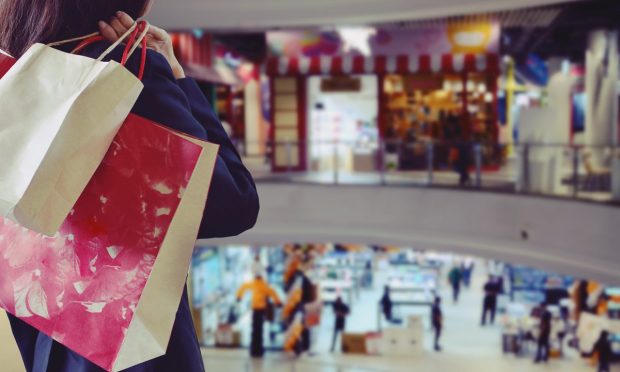How Retail is Turning Closed Stores Into New Opportunities

Black Friday proved to be an exceptionally dark place for some retailers this year. For some, it may prove to be their last one ever. As CNN predicted last November, stores like Sears and Kmart — once industry leaders — may soon disappear. The once thriving chain of nearly 2,500 Kmart stores, for instance, has now been whittled down to just 12 locations across the U.S., Puerto Rico, Guam, and the Virgin Islands.
But it’s not just certain retailers. It’s arguably most retailers. According to PYMNTS research, physical foot traffic during Black Friday — one of the heaviest shopping days of the year — was down compared to 2018, pre-pandemic.
In the meantime, big-name retailers are looking to stay relevant by expanding what the definition of “storefront” really means — especially amid a pandemic. For some retailers, practicing “retail inception” is proving to be a solid business strategy. This has been the case for a while. For instance, your Target run can now include an Apple purchase, thanks to a collaboration between Target (and additional partnerships between Target and companies like Disney, Ulta Beauty and Levi Strauss & Co.) to place stores inside of stores.
This decision merely enhances Target’s strength as consumers’ preferred place to get electronics from, stated Christina Hennington, Target’s executive vice president and chief growth officer.
It’s appealing — and convenient — for most to go to one store and be able to buy a variety of brands at once, versus going to separate stores or separate sites.
When One Store Closes, Another One Opens
Vacant and unused retail real estate poses big opportunities for takeover. Target, for example, recently confirmed it will open a new store next year at an old Kmart location that closed in early 2020 in Lebanon, Pennsylvania at a cost of just a $5 million transaction. During its brief retirement, this same site was also transformed into a mass vaccination and testing site, and Target’s revamp includes transforming the patient waiting area into retail space.
“In 2030, you’re going to see most malls are going to be not considered a mall anymore,” said Greg Maloney, chief executive for Americas retail at real estate services firm JLL, as quoted by Bloomberg. “They’re going to be considered a mixed-use asset.”
On that note, some malls are being transformed into concert halls or even a community college that houses students, like in the case of Austin Community College.
The Definition of ‘Mall’ is Up in the Air — Let’s Redefine It Together
As PYMNTS CEO Karen Webster wrote back in 2014, “If you’re a department store, maybe you didn’t notice but the Grim Reaper has already paid you a visit. Shoppers are deserting you, and brands will too, leading to more shoppers deserting you and so on.”
She added, “Survival will require retailers to focus their time, energy, and investments on the things that matter most – making consumers want to buy from them.”
Those brands and companies who work together to redefine what retail spaces look like may become tomorrow’s industry disruptors. Just like going on Amazon and buying all different brands from one place, such is arguably the future of physical retail, too.
Companies on the Verge of Extinction Get Set to Rebound
Under the guidance of its former landlord and now owner, Simon Property Group, JCPenney continues efforts aimed at restoring its glory days when the nature of big box department stores and so-called anchor tenants around them are evolving quickly and putting them at great risk of shutting down for good.
For example, last November, JCPenney named Marc Rosen, former executive vice president of Levi Strauss Americas, as its new chief executive officer. This move, as PYMNTS wrote, intends to position JCPenney to better serve its customers, win back customers and gain market shares. And to help the company bounce back from bankruptcy.
Earlier this month, JCPenney announced a 100 store-in-store partnership and online collection with Forever 21 — in an attempt to reach more Gen Z consumers.
Auld Lang-xiety
With the New Year looming, winter COVID rates soaring and inflation at generational highs, the department store ICU, so to speak, is comparably full.
But as much as Black Friday represents a company’s pulse, it doesn’t necessarily represent a retailer’s destiny — at least for those willing to adapt.
With consumer needs changing and malls becoming transformative spaces for shopping and beyond, retail leaders must reconsider where and how their brand fits into a new definition of shopping. Bouncing back is about thinking bigger, broader and getting into the minds of a consumer looking to put their dollars where their feet are.
